The best analogy for Network Rail’s ongoing campaign to embrace devolution did not come from the pithy pen of a journalist or industry commentator, but rather the proverbial horse’s mouth, during RAIL Managing Editor Nigel Harris’ candid interview with Mark Carne in RAIL 821.
Having been put on the spot over persistent criticism that the organisation is still too centralised, NR’s chief executive responded: “It’s like standing on a beach waiting for the tide to turn. For ages you can’t tell whether it’s going out or starting to come in - you only see gradual progress.”
It’s difficult to argue with anything contained within those two sentences, as the transfer of power to those at route level has been purposely incremental and carefully progressed, rather than a more immediate clamour at the risk of upsetting the apple cart.
You could go back as far as May 2011 and the publication of the McNulty report for the first formal nod towards decentralisation, with its conclusion that NR needed to do far more to work closely with its customers, while instilling a culture of greater cost efficiency and more competitive business practices.
Former Transport for London commissioner Sir Peter Hendy made achieving devolution his calling card upon his appointment as NR chairman in June 2015. A year later the cries became almost deafening, following a review by ex-HS1 Chief Executive Nicola Shaw into the future shape and financing of NR, that made strikingly similar recommendations to McNulty.
NR had already taken the initiative, however, with Carne strongly pushing through the devolution agenda from within, as demonstrated when NR’s Delivering for our customers plan was published in July 2016.
An update to that plan was subsequently published in February, confirming that (while perhaps long overdue) tangible progress is now being made to make NR more efficient, and adopt a stronger and more localised customer focus.
NR now proudly boasts that 99% of all infrastructure work and procurement can now be approved by its eight route MDs. Also, more than half of the performance measures it uses within its new route-based score cards have been set externally by its freight and train operator customers, and not trickled down from the centre as before.
NR also has a progressive plan to enhance its customer responsiveness, by aligning itself next to operators through the integrated operating teams that will first be introduced on the new East Midlands and South Eastern franchises when they commence next year.
NR is also embarking on a separate trial of supervisory boards on the Western route, comprising NR, train operating companies, Transport Focus and an independent chairman, which looks likely to then be rolled out right across the country.
It is easy to remain sceptical that the winds of change are now blowing freely through the behemoth of NR, especially when you consider the inherent difficulty of devolving decision-making to the routes while at the same time retaining its nationwide function as the central track authority.
But that cynicism is certainly not shared by NR’s London North Western Route Managing Director (RMD) Martin Frobisher, as demonstrated when RAIL caught up with him at Euston station to put to him questions on the level of autonomy now granted to him, on his true feelings of empowerment, and on whether his employer is merely paying lip service to a challenge that is just too hard to overcome.
“I read Nigel’s article and I was really encouraged by it,” he says.
“I sense real change at the moment, and appreciate the amount of devolution coming out to the routes. What devolution means to me is all about cutting through red tape and bureaucracy, and giving the routes the ability to do what they need to do without jumping through lots of hoops.
“Right now the routes have the financially delegated authority to deal with the vast amount of issues locally without having to seek central authority, and we’re able to just get on with things and provide a good service to our customers.
“Mark Carne’s comments really struck a chord because I see devolution happening on the ground, and I have a real sense of optimism that we have a railway that’s growing. We have the challenges of a really successful product that the public wants to buy, but an environment where authority is being delegated right out to the front line where things happen.”
So far so good, but what has visibly changed to support the new ethos and willingness to do things differently that Frobisher describes? Is he able to back up his statement with convincing evidence? He doesn’t hesitate or equivocate, but instead delivers a succinct and interesting insight into NR’s new breed of internal dynamics.
“NR’s central services team have become so much more customer-focused in the services they provide me. The obvious side of devolution is what goes on between the route and our external customers, but there’s also what goes on at the centre to consider and I feel that I am being treated more like a customer. They are adapting their services to suit me.”
He adds: “For example, all the routes previously had a flat rate we were charged for a tamping shift - you paid the same price whether it was Monday, Tuesday, Wednesday, Thursday, Friday or Saturday. It doesn’t take a genius to realise that track access is better on a Saturday, so we ended up with a situation of under-utilisation midweek and too much demand at weekends.
“I said that surely we should have a differential pricing system, so that I can get a tamping shift cheaper midweek, and pay more at weekends. NR has now done that for us, which means we get much better utilisation out of the tamping machines as a consequence.
“That’s real efficiency for the taxpayer as a result of route services being much more flexible and customer focused in what they offer.”
Another consequence of empowering the routes and strengthening their individual identities has been to introduce a greater emphasis on competition. Frobisher says this is a healthy framework to operate within that drives performance and innovation, while at the same time RMDs are encouraged to share best practice.
He points to the friendly rivalry he shares with London North Eastern RMD Rob McIntosh, as the Anglo-Scottish routes within their jurisdictions renew traditional battles for pride in a distant echo of the past and the days of the ‘Big Four’.
“West Coast and East Coast Main Lines are fiercely competitive. We both want to do well and we run a monthly competition we call the Golden Haggis, which is about running a good service on Anglo-Scots trains.
“There’s a real motive because FlyBe has been attacking the Anglo-Scots train market very aggressively. But by providing a good reliability and a good service, rail will always win. We therefore count PPM failures on Anglo-Scots services and we have a target each day. Whoever beats the target gets a gold star for the day, and whoever has the most stars in a month wins Hamish the Golden Haggis.
“We’re both doing our best to win, but who’s the overall winner? The travelling public. Rob and I are fiercely competitive, but in a way that we share ideas with one another and try and help each other. I’d like to offer a better service on West Coast and he with East Coast, which is good for everybody.”
With 14 TOCs and six FOCs operating across the LNW route, Frobisher is well placed among his fellow RMDs to evaluate the effectiveness of NR’s mission to offer improved external customer service, too.
And with such a large number of customers within his own route, including the likes of Virgin Trains and London Midland, he is able to call on a whole host of practical examples that illustrate how far he has been able to flex his new-found autonomy to meet their bespoke needs.
For a prime example of this new and flexible customer-oriented approach that NR’s route businesses have now adopted, he points to his ability to select the most relevant targets for CrossCountry to meet the needs of their passengers.
Carne also made light of this particular example in his interview with Nigel Harris, as a swift departure from the centralised inward-facing ways of the Network Rail of old.
Frobisher explains: “CrossCountry is a long-distance operator, and PPM is measured nationally at time plus ten minutes. But if you look at CrossCountry passengers flowing into Birmingham New Street, the vast majority of them change there. Arriving ten minutes late is therefore not a success for those people because you can easily miss your connections.
“And so, although the industry-wide measure says that nine minutes late would be a PPM success, it really isn’t. In fact, it’s worse than that because PPM is taken at destination and there’s about ten minutes’ dwell time at Birmingham New Street, so CrossCountry trains can be 20 minutes late coming into New Street and still achieve PPM at destination. What that means is PPM is not a good measure of customer service. Right-time arrivals is a much better measure for CrossCountry passengers.
“We were able to amend that for CrossCountry because we have route-level scorecards and we went out to every operator and asked them what matters most to them. We listened and have subsequently put in place lots of other measures around the things that really matter.
“For example, Virgin Trains historically had quite a lot of Sunday morning services from Liverpool to London disrupted by engineering work, so we put a focus on that and delivered good improvement. The Golden Haggis competition came out of the same scorecard, because we now know our revenues have been attacked by FlyBe. London Midland has told us that next year it is very keen about performance on branch lines, so we’ll look at that.
“These are not measures that you would necessarily focus on if you just applied one global one-size-fits-all PPM for every TOC (as NR did before), but when you get right down to the detail and ask people what matters, it’s led to some very interesting measures that are very customer-focused.”
Frobisher is more than happy to keep PPM as the topic of conversation, perhaps understandably given that it is a battle he is currently winning to propel the West Coast Main Line towards record levels of punctuality.
In January, the Annual Passenger Survey conducted by Which? confirmed that West Coast Intercity franchise holder Virgin Trains registered 88.3% of its trains as on-time during 2016, including 100 days where that level was higher still at 90% or more.
That is the highest level the operator has ever achieved on that route, while 88.3% is eight percentage points higher than when Virgin Trains was first awarded the franchise in 1996. This was before the completion of the WCML upgrade in the early 2000s and prior to the introduction of Virgin Trains’ high-speed fleet of Pendolinos, but Frobisher argues that it is nevertheless a powerful indicator that NR’s route businesses forming closer relationships with their customers is yielding impressive performance dividends.
He says that PPM continues to increase as a result of combined efforts between NR and the operator to identify and resolve the cause of delays quickly, including track defects and speed restrictions.
“PPM is the best it’s ever been on the franchise. A lot of hard work has gone into that and it’s running well, which I’d say is down to a couple of things.
“Really it’s about attention to detail. We’ve done things like moving the speed restrictions further north, so today you can get from Euston to Birmingham without coming across a speed restriction. You can get from London to Preston without seeing a speed restriction, and that makes a real difference.
“Then, we used to have lots of drivers reporting bumps, and now we have a guy who cab rides the routes every day to identify any imperfections in the track that drivers might report as a bump, and then we try and get to them fast and fix it.
“There’s also a really professional operational team from London Midland, Virgin Trains and the other TOCs, so it’s team work and not just infrastructure. We work very closely with them and it’s a combination of a lot of people working together, so I wouldn’t want to take sole credit for it.”
Frobisher also has several other reasons to feel optimistic for the current healthy status of his route, not least the continued large-scale investment being made in the Great North Rail project that will deliver over £1 billion worth of network improvements by 2022 across the North West in particular. These include North West electrification, the trans-Pennine and Calder Valley route upgrades, increasing capacity in and around Liverpool Lime Street, and construction of the Ordsall Chord linking Manchester’s Piccadilly and Victoria stations.
Frobisher and his team at LNW are also busy preparing their submission to the next High Level Output Specification, which will outline the Government’s spending priorities for Control Period 6 (2019-24) when it is published later this year.
Affecting his route during CP6 and then CP7 (2024-29) will also be High Speed 2, now that Royal Assent has been granted for construction to begin later this year on Phase 1 of the route between London and Birmingham. HS2 will open in 2026, with operation of the first high-speed services to be included in the next West Coast Intercity franchise that begins in April 2019. Phase 2 between Birmingham and Manchester and Leeds is then expected to be completed by 2033.
Construction could also begin on the next phase of the East West Rail route that will eventually link Oxford and Cambridge, now that a company has been set up by the Department for Transport under the chairmanship of former Chiltern Railways MD Rob Brighouse (RAIL 822).
Brighouse has been tasked with examining ways to fund, build and operate the line independently of Network Rail, in an innovative experiment with private delivery that is intended to provide a benchmark for NR’s own internal processes for future enhancements.
Frobisher adds: “The Northern Powerhouse project, which we are now calling the Great North Rail project, is under way and is being built. It’s £1.4bn and has many exciting parts including the Ordsall Chord, new electric lines to Liverpool, faster trains to Liverpool and Manchester, and new platforms at Manchester airport.
“The money we invest in the Great North Rail project pays itself back many times over in the economy, and it’s really driving growth. £1.4bn is a huge sum of money, and there’s more being spent at the moment in the LNW route in the North than there is in the South, so Northern Powerhouse is really happening and it’s a real renaissance for the region.
“We’re putting together our strategic business plan for the next Control Period at the moment, and there will be route settlements for maintenance, operations and renewals.
“For enhancements we obviously have a portfolio of schemes, such as the Hope Valley capacity project which has slipped from CP5 to CP6, and then a whole programme of things across the North, in particular to support the investment TransPennine Express and Northern are making in new (electric) rolling stock.
“Further south there’s East West Rail, which is obviously a scheme that has real Government support and which the Secretary of State would like to accelerate. The early phase will interface with the Chiltern and West Coast Main Lines between Oxford and Bedford. Rob Brighouse has a good team, and we should look forward to new and innovative ways of delivering projects.
“The next really big thing for us will then be HS2 going north from Birmingham to Manchester, and the scale of redevelopment that it will bring to Crewe and Manchester Piccadilly stations. The build here at Euston is kicking off soon, and I look forward to working with HS2 Ltd on that and getting the high-speed platforms and train shed put in alongside ours, which will be really good.
“When it was going through Parliament with all the petitions it was a difficult political process, but now we’re into classic railway engineering, which is what we’re really good at.”
Frobisher concludes by looking ahead to the future control and command structure of NR. He says that although much progress has been made to shrink the centre of NR, the devolution process is still far from complete.
“It’s the people on the front line who know the answers to all the issues. We just need to free them up and let them get on with it, and working more closely with the operations team at all the TOCs I work with is what it’s all about.
“I think it’s a steady journey and I’d like to see more , but I think that’s coming through. In the next Control Period there will be route-based settlements so that’s real true autonomy as a route business, so we’ve made progress there.
“We’re part of the way there. I really appreciate the progress that’s been made so far, and I’m looking forward to the next steps.”
This feature was published in RAIL 824 on 8th April

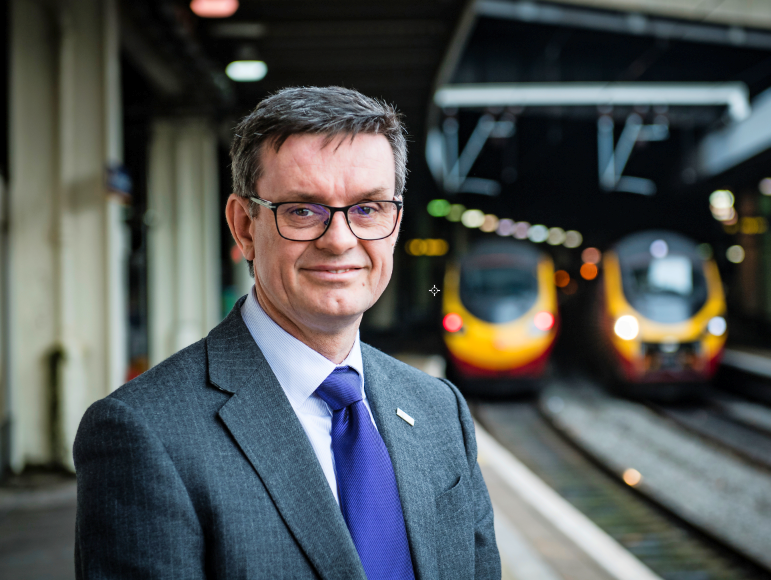
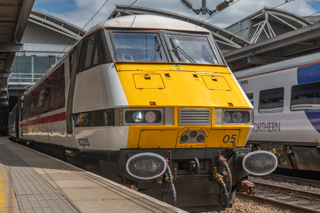
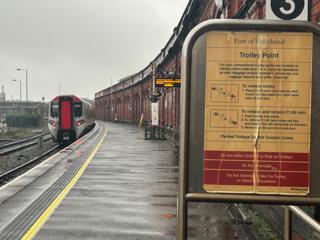
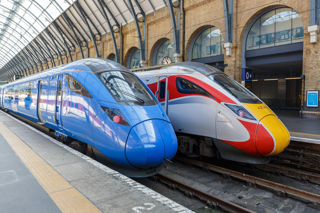







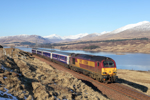



Login to comment
Comments
No comments have been made yet.